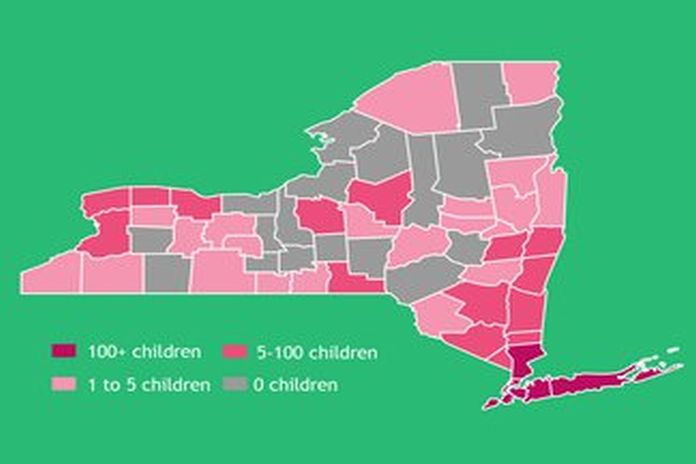NEW YORK, USA, (UHF) — Between March and July of this year, 4,200 children in New York State lost a parent to COVID-19—one out of every 1,000—and 325,000 children were pushed into or near poverty by the pandemic-related economic downturn, according to a report released today by United Hospital Fund, based on an analysis conducted in collaboration with Boston Consulting Group.
An estimated $800 million will be needed over the next year in housing, food, health insurance, and remote learning investments to support the basic needs of children affected by the pandemic. In addition, the long-range repercussions on children will result in some $1.7 billion in additional costs to the state over the next 50 years, plus $8.5 billion in annual earnings lost due to learning deficits associated with a disrupted education.
The report, COVID-19 Ripple Effect: The Impact of COVID-19 on Children in New York State, says that the consequences of losing a parent or caregiver to COVID-19 are likely to be severe and long lasting, with 23 percent at risk of entering the foster care system or the care of a relative, and 50 percent at risk of falling into poverty.
“This pandemic is like nothing we’ve ever seen before. The closest comparison in the state would be 9/11, when more than 3,000 children lost a parent,”said Suzanne Brundage, Director of UHF’s Children’s Health Initiative and a co-author of the report. “Losing a parent or caregiver during childhood raises a child’s risk of developing a range of poor outcomes over their lifetime, including poorer mental and physical health.”
Because of the pandemic’s disproportionate impact on people of color, this burden will likely fall most heavily on Black and Hispanic children, who experienced the death of a parent or caregiver at twice the rate of Asian and white children. One in 600 Black children and one in 700 Hispanic children experienced such a loss, compared with one in 1,400 Asian children and one in 1,500 white children. Based on county-by-county data, 57 percent of parental deaths were concentrated in three New York City boroughs: the Bronx, Kings (Brooklyn), and Queens.
The analysis builds on a UHF/BCG report in 2019 that calculated the ripple effect of the opioid crisis on children in every state. For this new analysis, deaths were broken out by age, gender, and county of residence to determine the likelihood that a person who died from COVID-19 was a parent or primary caregiver of a child under 18. Both probable and confirmed COVID-19 deaths were included.
The new report is in two parts: Part 1 estimates the number of children in New York State who lost a parent due to COVID-19, and the racial, ethnic, and geographic disparities, while Part 2 looks at the broader economic toll, including parental job loss and teen unemployment. Tables and charts in both reports showed the impact of the pandemic on children in every county.
“As New Yorkers determine how to respond to the pandemic during a precarious city and state budget situation, it is critical not to lose sight of its immediate and long-term effects on child poverty, mental health, and overall well-being,” said UHF President Anthony Shih, MD. “We hope this analysis will provide policymakers and community leaders with the data to help develop necessary strategies and policies.”
In addition to Ms. Brundage, the report was co-authored by Kristina Ramos-Callan, UHF Program Manager. Both parts of the report can be accessed at UHF’s website here.





